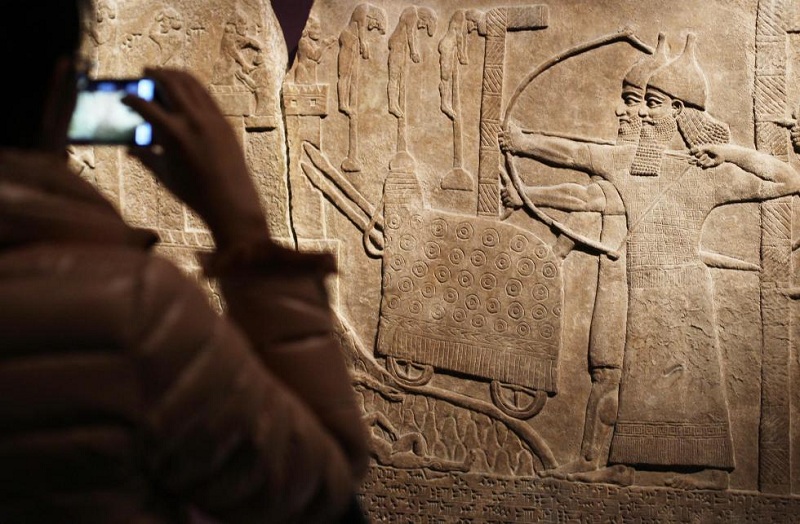

More than 170 Mesopotamian artefacts, including wall reliefs, jewellery and tablets, go on display at the Museum of History today, in the first exhibition of its kind in Hong Kong.
"The Wonders of Ancient Mesopotamia" - which explores the period from 3,500BC to 539BC of the area that today includes parts of Iraq, Syria and Turkey - showcases objects from the British Museum's Middle East Department. It is the first time Hong Kong has held an exhibition of Mesopotamian artefacts.

The Museum of History and Jockey Club each contributed half the HK$13.8 million cost of the exhibition, which is jointly organised by the Museum of History and the British Museum. Among the artefacts, visitors will find cuneiform scripts - the earliest known form of writing - gold jewellery, cylinder seals used for legal and commercial purposes, spearheads, relief panels and palace furnishings of bronze and ivory. There are fragments from the library of Assyrian King Ashurbanipal, who was unusually literate and scholarly. His is the oldest surviving royal library.
The exhibition showcases Mesopotamia's innovations including the method of counting and measurement which led to the system of dividing hours and minutes into 60.
"The Mesopotamian civilisation had such a big influence on the arts, urban life, astrology, the system of telling time and more," Museum of History chief curator Susanna Siu Lai-kuen said. "The innovations of Mesopotamia are very relevant to our lives today. We thought it was important to bring this to the public."
Sarah Collins, curator of the British Museum's Middle East Department, said Mesopotamia was an advanced civilisation. "In their administration, legal affairs, politics and religion, they were very well-organised," she said. Chief Secretary Carrie Lam Cheng Yuet-ngor, British Museum deputy director Andrew Burnett, British Consul General to Hong Kong and Macau Caroline Wilson and Director of Leisure and Cultural Services Betty Fung Ching Suk-yee attended the exhibition's launch yesterday.
Mesopotamia included the Sumerian, Assyrian and Babylonian empires.
The exhibit takes visitors through the agricultural developments of Sumer, the military might of Assyria and the legacy of cosmopolitan Babylonia.
Also covered in the museum are the hanging gardens of Babylon, the only one of the seven wonders of the ancient world that has not been found.
The exhibit runs until May 13. Entry is HK$10.

or register to post a comment.